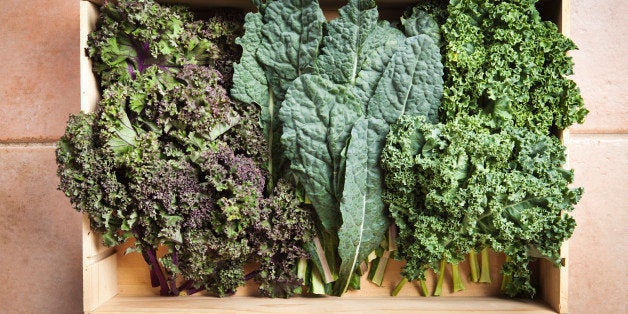
By Keri Gans for U.S. News
These days, hardly a day goes by that I don't read something promoting kale as a nutritional powerhouse. Recipes that include kale are popping up all over the place, making you wonder how we survived without it.
More From U.S. News:
How to Be a Better Example for Your Kids
5 Great Diets for the Whole Family
Easiest Diets to Follow
To be honest, I don't love kale. It tastes bitter to me. But as some friends have pointed out, maybe I just haven't tasted it in the right dish. Regardless, I've decided to compare kale to other dark leafy greens that may not be getting the recognition they deserve, specifically: collard greens, Swiss chard and mustard greens.

Source: Self Nutrition Data
As you can see in the chart above, kale does exceed the other greens in vitamins A and C, but Swiss chard has 16 percent more iron than kale. Collard greens has 18 percent more calcium per serving of kale and double the amount of protein and iron. And mustard greens holds its own by having the least amount of calories and slightly more protein and calcium than kale.
All four types of greens are also rich in many other nutrients, including manganese, folate, copper, choline, magnesium, potassium and vitamins E, K, B2 and B6.
As far as health benefits, I didn't see much evidence that kale stands out more than the others. They're all rich in antioxidants, which means they may all provide a range of health benefits, including decreased risk of certain cancers and cardiovascular disease, lower cholesterol and reduced prevalence of age-related macular degeneration. The amounts of calcium, vitamin K and magnesium found in these greens could also suggest that they may be beneficial for bone health. And a few unique studies suggest that Swiss chard may help blood sugar regulation -- a beneficial property for people with diabetes.
Bottom line: Yes, kale is very nutritious. But so are lots of other greens that, in my opinion, deserve more attention. Since it seems that many of these greens can often be used interchangeably in recipes, try new types of greens as you make salads, soups, omelets, pasta and simple side dishes. Below is a recipe from a friend, Jackie Newgent, who is a nutritionist and chef. She assured me that you could use either kale, mustard greens, collard greens or Swiss chard for this recipe, and the dish would be equally delicious.
Garlic, Greens and White Bean Soup (Serves 7)
- 1 tablespoon extra-virgin olive oil
- 1 medium yellow onion, halved and thinly sliced
- Juice and zest of 1 small lemon (2 tablespoons juice)
- 1 teaspoon sea salt, or to taste
- 6 cups chopped dark leafy greens of choice
- 3 large garlic cloves, minced
- 5 1/2 cups low-sodium vegetable broth
- 1 (15-ounce) can cannellini or other white beans, drained
- 1/2 teaspoon fresh rosemary, minced or 1/4 teaspoon crushed dried rosemary
- 1/4 teaspoon freshly ground black pepper, or to taste
- 1/4 teaspoon hot pepper sauce, or to taste
In a stockpot, heat the oil over medium heat. Add the onion, 1 tablespoon of lemon juice and 1/4 teaspoon of the salt. Saute until the onion is fully softened, about 8 minutes. Add the greens and garlic, and saute until the greens are wilted. (Note: saute time will vary depending on greens.)
Add the broth, beans, rosemary, black pepper, hot pepper sauce, and the remaining lemon juice and salt. Increase the heat to high and bring just to a boil. Adjust seasoning.
Ladle into individual bowls, sprinkle with the lemon zest, and serve.
Nutrition information per 1-cup serving: 100 calories; 2 g total fat; 0 g saturated fat; 0 g trans fat; 0 mg cholesterol; 550 mg sodium; 16 g total carbohydrate; 5 g dietary fiber; 3 g sugars; 4 g protein.
(Recipe adapted with permission from "1,000 Low-Calorie Recipes" by Jackie Newgent, RDN, CDN.)
Keri Gans, MS, RDN, CDN, is a registered dietitian/nutritionist, media personality, spokesperson, and author of The Small Change Diet. Gans's expert nutrition advice has been featured in Glamour, Fitness, Health, Self and Shape, and on national television and radio, including The Dr. Oz Show, Good Morning America, ABC News, Primetime, and Sirius/XM Dr. Radio.
